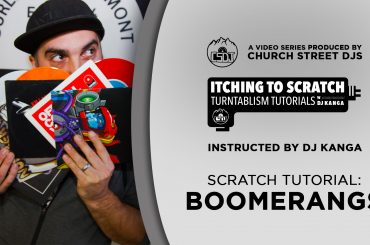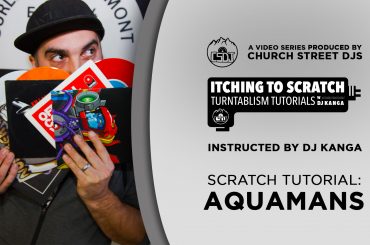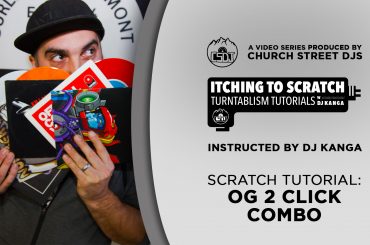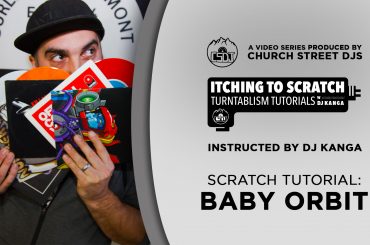On the eve of what can easily be considered the biggest day of his young career with this release of his highly-anticipated debut album, Secret Level; No Mana has decided to celebrate the occasion by sharing five of his essential tips when it comes to production.
Currently making the rounds across North America as part of his headlining tour, the production prodigy, and mau5trap “horde” fan favorite gives us an exclusive look into his creative process.
As if the release of his highly anticipated debut album wasn’t enough to get the electronic music community excited, we’re now getting an open and honest look into his production process.
Dive right into No Mana‘s free-spoken keys to production success below and be sure to give Secret Level a listen when it drops tonight at midnight EST.
Don’t know what a compressor does? Grain delay? Limiter? (God forbid), Soundgoodizer? Having a hard time figuring out what comes out of it? Crank up a parameter you’re unfamiliar with and see, and don’t go into it afraid, thinking that there’s a wrong way of doing it; if you do, you’re less inclined to push a parameter enough to understand the sonic difference. Do this repetitively, and maybe even recklessly, and alternatively listen to the mix with and without the effect to see what you’ve done.
Sometimes you gotta go full madman, then get smart from it. The more you do this, the more you’ll become familiar with the sound it creates – by doing this, you are training your ear. The more you train your ear, the more precise you will be with your effects; you’ll then eventually find yourself modifying the parameters by such a precise and small amount because you’ll notice a difference by even just a fraction of its change.
Doing this is essential if you want to learn everything yourself and not rely on YouTube tutorials, or how other people may want you to do a specific thing, because you yourself are learning by listening to what each control does by tweaking them to their extremes – firsthand.
Alright, I’m a hypocrite, but let me explain. The first couple tips are used in different cases. The previous tip was more about doing so with the purpose of learning from it via experimentation. Now that you have learned what the effect does, learn to use it in proper and even small doses so that you can practically apply it in a mix.
Think of it like baking. Some recipes for confections call for salt, even when confections aren’t supposed to be salty. A parallel to salt in something of music production would be reverb. A common amatuer mistake is to use too much reverb, thinking that it benefits the mix such that it fills emptiness. However, by using too much filler on something that doesn’t need it – whether it be reverb, delay, whatever – reduces the dynamic quality of the mix.
I’m not saying to never use full reverb – many atmospheric elements call for it. On the other hand, synths that sit in the front line of the mix don’t need it as much – and you want those sounds to be as clear and bold as possible, so use less reverb on those.
If anything, I personally like to use a pinch of reverb so that it creates less ear fatigue and adding a tiny bit of depth to the sound. So, it has salt, but it isn’t salty. Now, that isn’t to say effects are only to be used sparingly. Again, just like cooking, think of my kicks like a steak, and say I don’t like to use much compression, and think of compression like sugar. Although I never use sugar on my steak, I would use a fuck ton of it on a different food, like cake – one of two courses of a meal, the meal being the song. Think of cakes like basslines – assuming you’re making something loud, like dubstep in 2013. Most likely you’re going to slap an over-the-top compressor on it the same way you would dump a ton of sugar when making a cake. Congratulations, you are now Dillon Francis.
In other words, each sound has its own calling for different ingredients, and now that you know the sound each tool in your DAW makes by going to the extremes (or not) with it, now it’s time for you to use your own judgment as an artist to decide where to place those sounds and how to enhance them.
As much as I think these bad boys are effortless when I make them, I couldn’t go without explaining how I make them since I’m constantly asked how they’re made. Here’s the foundation of what I use:
I have, essentially, 3 parts. The meat of the kick, the pre-transient, and a sidechain tool – which is just Ableton’s native synth. The meat of the kick is, well, the meat of the kick. It’s sonically 90% of what the kick is, everything else is a supplement. You’ll see that in the meat, it’s divided into 3 parts – high, mid, low. They’re 3 different samples that make up what the kick is in different bandpasses of the frequency spectrum. I’m usually not limited to those 3, and in many cases I’ll have one sample in the highs, one in the lows, and like a bajillion in the mids because I think that’s where I have flexibility with giving a kick some character. There’s no secret to making it sound good, I just rely on the samples I’m selecting at the discretion of my own judgment.
Sometimes I may not even use a kick sample for part of a kick – it may be some other foley or whatever I have the pleasure of getting creative with. Having many samples may just be my effort to make it sound less like any of the individual samples used in the entire kick (to be fair, I still use Vengeance kicks from 2013). The pre-transient is a mid-high-frequency sweep I like to add before the main transient that’s in the meat of the kick. It begins maybe 2 or 3 milliseconds before the main transient, and sweeps into the main sound. It may be an extremely shortened hat that’s pitched down 7 semitones (for character in the mid-range), or a transient of another kick, or whatever sounds right to me. A pre-transient gives the kick a kind of “thump” or “thwack” quality. When Feed Me and I were messing around in the studio at some point, he described it, saying it makes the kick “sound bigger than it actually is”.
The last track used, titled “Operator”, is just a silent tool to create sidechain. I basically output a noise oscillator out of that (30-50ms of it when triggered), mute the track, and feed the pre-FX audio into sidechain compressors. Some people may sidechain differently, like with third-party VSTs, and some people say that way is cleaner. I just do it my way because that’s what I’m comfortable with. There’s also probably an easier way of applying drums.
With the accessibility of great-sounding samples from websites like Splice, it may just be as simple as ditching the complex, multilayered system I have and keep it to one layer of a kick sample if it sounds that good. Often times, adding layers is only called for to change the sound of the kick to fit the mix since the mix changes over time throughout the making of the track. Same with EQ – a bare single-sample kick may sound great by itself, but until you apply it in a track, and the track evolves throughout the making thereof, I may find myself wanting to EQ it to fit that mix. To sum it up, a great kick is a combination of great samples, psychoacoustic additions such as pre-transients (if called for), and the way it’s tastefully mixed in a track.
I know my album was released on Valentine’s day, but that’s not what I meant. You’ve probably heard KISS before – keep it simple, stupid. Or is it keep it stupid, simple? Anyways, it’s important to not overcomplicate things. It’s fine to totally dismiss this entire tip if you’re going into music production with an experimental mindset, but if we’re talking about applicable music this is a very important tip to me. In terms of technical practices, be efficient with your effects. Don’t be repetitive with them; think like a programmer if you have studied that. If you want to add more reverb, don’t add another reverb on there if you already have one on the track. Two effects don’t make the sound very, very, way more stronger; just make your one effect you have just as strong. Also, use sends or grouped tracks if you must, instead of throwing the same effect on each track that needs it – your computer will thank you. You will also thank yourself for having way less knobs to worry about.
Also, work incrementally when designing your sounds (this also means only load the effects or instruments you’re going to currently use). I’ve seen some custom Ableton Live default projects that launch 100 instruments. It’s so needless to me; you’re wasting minutes of loading time, computing resources, and you’re probably not going to use 20% of them. Start fresh and don’t clutter your workspace – your collaborators will thank you. Working incrementally applies to the mastering process of a track. I saw this great status iZotope posted; it said something along the lines of “make your mixdown sound as if there’s no master, and make your music as if there’s no mixdown”. Making music is a whole game of making stuff sound good, right? And if that were true, and your music (before mixdown and mastering) sounded as perfect as can be, it would hypothetically make obsolete the mixdown and mastering process. Make your music/mixdown sound as good as possible without anything on the master, before you approach the master. And, if you decide to send that mixdown to third party mastering, those mastering engineers will thank you.
Working incrementally also applies to developing individual sounds in the mix. In synthesis, start from the ground up – from within your synth, to effect 1, to effect 2, to filter, to EQ, to compression, to reverb. Perhaps the order may be switched around, but spend time perfecting one step before the next. If it all sounds good within your synth, there may be no need for effect 1 or effect 2. Working incrementally helps me from getting lost in complications if I wasn’t working incrementally, especially when regressing to improve previous modifications. This also applies to mastering. If my mixdown calls for it, I personally like to start with EQ, then make it sound as good as possible to me, then move onto multiband compression, then make it sound as good as possible, and so on, adding each effect as it still calls for it, until I reach the limiter which should be the final addition in this process. Working incrementally isn’t always a necessity, especially if you decide to experiment a little – but I encourage that work ethic as much as possible. Aside from technical points of keeping things simple, the same just as much applies to the artistic contents of music.
It’s a nice flex sometimes to add a shit ton of sonic elements in a track, or have like 20 bass drops, but it’s impractical. You should have a nice flow of only the proper elements that fit together in a pace that’s digestible to you as a listener. Again, think of it like cooking. I like chicken tenders, and I also like chocolate; but you’re not going to see me dip my chicken tenders in chocolate sauce. The same goes for music – a listener can like many things in music, but they prefer to take in things in a tasteful way. So as nice as it sounds to have a drop 30 minutes long, at some point the dancer will have to breathe, or else 28 of the remaining minutes they’re just gonna sit there and wonder when the next drop is because there’s no dynamic to distinguish different sections of a track. That’s not as tasteful as having ebbs and flows of energies where the dancer can rest then dance for more than 2 of that 30 minutes.
Advocating simplicity shouldn’t negate the value of complexity or maximalism. If you want to create something mesmerizing, think of simple melodies, rhythms and simply layered sounds that the listener can easily latch onto. You’ll be surprised how 4 tracks and just a few sounds at a time can resemble a lot of power, as opposed to several tracks of basslines and countless other instruments on top of it. There is music out there that has a great amount of interesting things going on in the mix, and some may call it complex, and it’s great; but most of those tracks have simpler-than-you-thought methods to achieving those sounds. Just because you think your reference track sounds insanely complex doesn’t mean you should over complicate your own. What it all comes down to anyways, is how you, the artist, will decide to tastefully place their elements on their piece of art. Starting with a simple mindset is a great way to approach it.
As much as this should be the first priority and is listed last, the best should always be saved for last. If I wasn’t happy with my body or especially my mental state, making music wouldn’t be a very long-lasting thing for me; so here’s some tips about that, which apply to not just in the studio, on tour, but your entire life as well. Eat good food, not just to make you full, but to treat yourself to the nutrients that make you an exceptional person.
Exercise, not just so you can flex the pecs at the hunnies, but so you can get your blood flow for the day, increasing your focus for when you get in the studio. Cut energy drinks out and run on the energy of your good health – maybe a coffee or tea here and there if you aren’t caffeine over sensitive like me. Don’t be afraid to sleep or rest as it’s an important antidote against writer’s block. Work efficiently, not arduously. Book flights convenient to your sleep cycle (shut up, Jon).
Also, here are a few bland, but important tips that has helped me cope with depression a couple years ago; follow the things you love and stop reacting to the things you hate; focus on the things you want for yourself and not about the things you don’t have; be grateful for the things you have; never compare yourself to others and have faith in your own path, for at least the faith itself will give you the positivity to keep moving forward; believe in the Kamina that believes in you; live like there’s no tomorrow; love; laugh; and whatever more bullshit Karen told me over last Sunday’s brunch.
That’s that. I hope you gain something from it, whether you’re already established, just starting, or Elon Musk. I apologize for the long read, I think I just like writing. I think I’ll quit music for it.
To check out more pruduction tips, click here.
DJ Times Magazine is copyright © 2020 by DJ Publishing, Inc. www.djtimes.com








